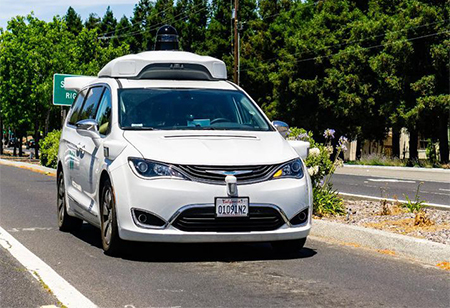Crafting cars autonomous is all the rage in the engineering world today. And a number of companies in India are involved in helping global automotive majors transform their cars.
Two kinds of work dominate here, given the talent the country has. One is on the silicon side, trying to make the kind of semiconductor chips that sensors in the car need. The sensors have to capture all the data around the car continuously — objects and people, road signs and lanes, traffic lights. India is one India is one of the world’s biggest chip design hubs, so this activity fits into that expertise.
The second activity is related to the computer vision and image processing side, the work that involves analysing images that the sensors capture using AI.
Semiconductor industry veteran Dasaradha Gude says the existing sensors are very low powered and the quantum of data generated by the sensors is huge. “If we can build intelligent sensor hubs in the car that can communicate at high speeds, then that will make a big difference,” he says. It’s such chip development that helped cellphones to take off.
Players like Denso, STMicroelectronics, NXP Semiconductors, Intel, and every automaker, through their tech development centres in India, are doing chip related work.
Manav Mediratta, director of R&D for radar at semiconductor company Texas Instruments India, says some of the foundational work on car radars is happening in its India centre.
“We are making radars smaller, more cost- and power-efficient, and even including some processing capabilities into it, so as not to burden the car’s central computer too much. We are also working to make these analog devices work with the car’s digital system,” he says.
Among those working in the computer vision and image processing side is Mercedes-Benz Research & Development India (MBRDI). The work involves inferring data from sensors, determining what the object is, training the AI/ML algorithms to understand things on the road — if it is a child, does it look like she will come in the path of the car, is it a policeman, is he carrying a gun, is that cyclist showing a left indicator.
MBRDI says collecting the massive amounts of data necessary to train AI algorithms is tough. “We even get it from Hollywood films, and ask the police to alert us when they go on an assignment, so we can film them. Once we get the images, we have to annotate them to mark out different kinds of objects. We have 300-400 people working 24/7 on such annotation, because data is expensive, and the longer we keep it, the more expensive it gets,” says a senior engineer at MBRDI.
Vincent Roche, CEO of semiconductor major Analog Devices, says his company has a great track record of developing sophisticated automotive imaging systems in India. “It’s a very difficult problem. We used to do it for cameras, now we are deploying a lot of that knowledge in radar solutions,” he says, adding that radar technology is now able to see objects with 2.5/3 cm resolution over a 100 metres.
Local companies like ZF India Technology Centre in Hyderabad and KPIT TechnologiesNSE -0.30 % in Pune are among those who are doing core work for global auto majors. Raghav Gulur, MD of ZF India Technology Centre, said the company is working on software to assist drivers. ZF has launched an intelligent advanced driver assistance system (ADAS) using the Nvidia Drive platform. Called coPilot, it leverages AI and, equipped with a comprehensive sensor set, it allows vehicles to perform various automated driving functions, especially on freeways. It can be operated with voice commands and is designed to recognise traffic conditions, sense vehicle handling and monitor the driver.
KPIT is working with Austrian firm TTTech and BMW to develop a variety of autonomous functions. Kishor Patil, co-founder and CEO, says the company will also roll out software solutions that can be licensed to auto makers.
And then there are ambitious startups, like Mumbai-based FishEyeBox, which focuses on AI solutions. Founder Pinaki Laskar says the company has developed an all-in-one solution for an intelligent drive system which can be interfaced with any automotive grade drive-bywire (computer controlled) platform in the world. “It’s the brain for autonomous and connected vehicles. We will be able to develop a Level 5 auto-pilot (no human intervention involved) in the not too distant future,” he says.
 Magazine
Magazine
